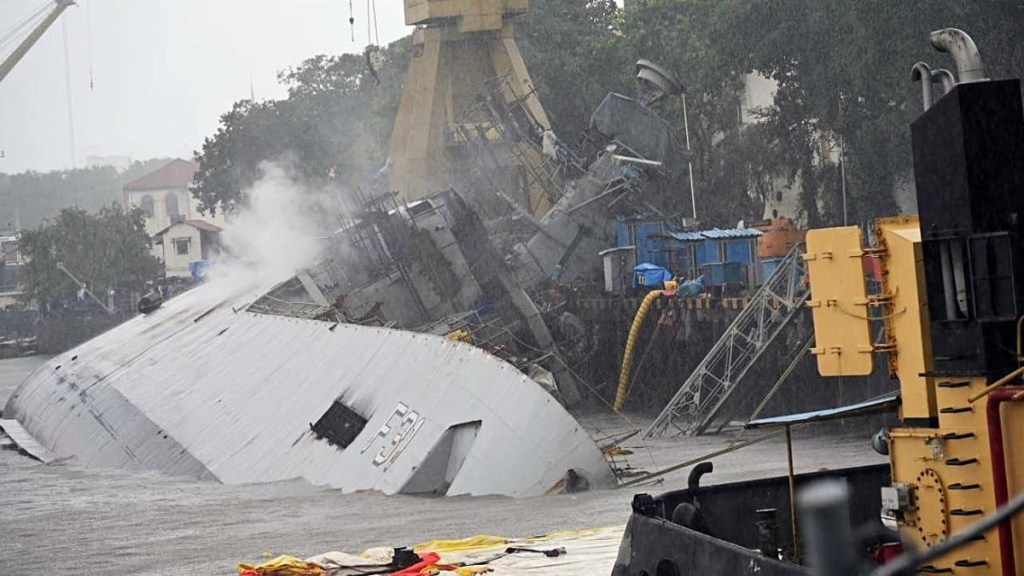The recent fire aboard the INS Brahmaputra has sparked scrutiny over the Indian Navy’s safety protocols. The talk over the timeliness in managing the issue warrants a detailed look at the incident and the Navy’s response.
Why Did INS Brahmaputra Catch Fire?
The fire that broke out on the INS Brahmaputra on the evening of July 21, 2024, happened during a scheduled maintenance at Mumbai’s Naval Dockyard. The Indian Navy regularly overhauls and upgrades its fleet to modern safety standards.
Maintenance periods are high-risk due to activities like welding and handling high-voltage equipment. In fact, the sinking of INS Brahmaputra during refit may be attributed to weight distribution and stability changes, which are common during extensive maintenance.
Such incidents are not unique to the Indian Navy. Under similar circumstances, the US Navy’s USS Tulsa experienced a partial capsizing in 2017.
The USS Bonhomme Richard suffered a catastrophic fire during maintenance in 2020, and the Royal Navy’s HMS Endurance and the Russian Navy’s Admiral Kuznetsov have faced similar challenges.
All that is to say that naval incidents, including fires and capsizing, are global challenges. While they do invite heightened scrutiny, domestically and sometimes internationally, such happenings can’t be held responsible for sinking the Indian Navy’s safety record.
Was The Navy’s Response Timely?
At the outset, it appears that the response was not timely. However, considering the circumstances changes that perception. Like most navies, the Indian Navy had dockyard firefighters on standby who joined the efforts to contain the fire. Nearby ships also came to the aid of the INS Brahmaputra.
Firefighting operations onboard warships (even docked ones) are quite different from those carried out on land. Given the various and complex electrical systems, the fire extinguishing efforts have to be carefully planned out, taking into account a lot of situational information.
The fact that the INS Brahmaputra was huge, and mobile– in the sense that a change in weight distribution could affect its stability and potentially cause it to tilt more– added another layer of risk.
The crew’s training and dockyard support ensured minimal damage.
How Much Has The Navy Been Affected?
Despite a few incidents like the one that affected INS Brahmaputra during repair and maintenance, the Indian Navy remains operationally ready. The service continues to participate in international exercises and strategic patrols in the Indian Ocean Region.
What’s Next?
An Indian Navy personnel close to the developments told FinancialExpress.com that the service is investigating to prevent future occurrences.
The Indian Navy continually reviews and updates safety protocols to address lapses. Comprehensive reviews follow each incident, with corrective actions implemented, the source noted.
Past incidents, such as the tipping of INS Betwa, led to procedural changes and safety improvements. Revised dock safety protocols post-INS Betwa show that lessons from such incidents have been taken seriously.
After the incident with the submarine INS Sindhuratna, the service carried out extensive safety audits and upgrades.
The Indian Navy continues modernising its fleet and adopting new safety and efficiency technologies.

